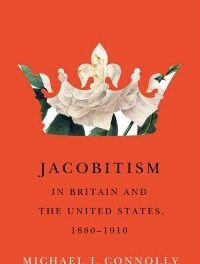We support our Publishers and Content Creators. You can view this story on their website by CLICKING HERE.
All the immortal myths, sagas, and fairytales we locate in the world of make-believe are retold in the Bible. Likewise with our school’s recent production of “The Sound of Music,” whose Cinderella story of the pure maid who hears a call from God echoes unconsciously into their lives in a classical Catholic academy.
A few years ago our very typical K-8 Catholic parochial school expanded to include an Upper School. It has been a delight to see how a small, family focused parish school can minister to children of all ages. Having younger children as part of the community helps Middle School and Upper School kids stay connected with their siblings while keeping the Upper School kids on campus means the younger ones have someone to look up to and share school life with.
Since serving as a high school chaplain, it has become clear that it is disastrous for Middle School and High School students—at a most vulnerable time of their lives—to be isolated from the influences that should be most important to them: their parents and siblings. Deposited in a hothouse environment with hundreds of their peers, no wonder teens are swayed by destructive influences, secular values, and insidious ideologies.
In our integrated parish school, the extra-curricular activities are a special time for the various ages to come together to play, work, pray, and learn as an extended family unit.
A good example was our recent production of the classic musical The Sound of Music. Upper School students played the major parts—performing astonishingly well as the Mother Abbess, Maria and the Captain, while Middle School and Lower School kids filled in the smaller parts and shone as the Von Trapp children. The six performances were sold out as family members and friends filled the home-made theater space, and all together the drama articulated our shared Catholic faith.
Here was Maria—an orphan girl who wanted to be a nun, but most of all wanted to do God’s will. Here was a mentor advising her quite rightly that she could love God through marriage and family life. As the play continued and I pondered on the famous story it seemed to me that The Sound of Music is actually a modern fairy tale—a Cinderella story to be precise.
There were all the elements: an orphaned heroine, some nasty (well maybe not SO nasty) stepsisters in the nuns who criticize her, a fairy godmother-mentor in the Mother Abbess, a villainous step mother figure in Elsa and the captain plays the handsome prince in the palace.
Is it too much of a stretch to ponder why certain fairy tales are told and re-told and re-cast and refreshed within not just our culture—but in many cultures world wide? The story of the downtrodden orphan girl who is blessed with good fortune and lives happily ever after is one of those “princess” stories that echoes time and again through both historical and contemporary culture.
I have a theory that all the great fairy tales and myths are also echoed in the stories and sagas of the Bible. In my book The Romance of Religion I outlined some of the parallels:
Consider for a moment all the great mythic stories of the world. Think of their great themes. Each one can be found in the Old Testament, which is both the story book and the history book of the Hebrew people. Are you looking for the story of the ordinary man who is really a prince, who hears the magic voice calling him to embark on a heroic quest? Has this ordinary hero a dark secret? Has he killed a man? Is he on a journey to reclaim his own soul as well as to overcome a powerful, dark Lord and set his people free? It is the story of Moses.
Shall we tell the tale of the hero who must pass through the underworld to claim salvation? Does he go down deep into the darkest bowels of the earth? Does he face his own mortality, his own rebellion, his own weakness and poverty? Does he lose all to gain all? Does he sacrifice his own life, then rise victorious to save his friends and family and himself? Then remember Joseph who was cast down into the pit, sold into slavery, and emerged triumphant as a ruler in Egypt. Or think of Jonah the prophet who was thrown into the deep and dark chaos of the sea, swallowed by a great fish, only to be vomited out on the third day, soiled but triumphant. Remember Elijah, in the depth of the cave on the holy mountain, sitting and watching and waiting for the voice of God.
I could go on, but my point is that all the immortal myths, sagas, and fairytales we locate in the world of make- believe are re-told in the Bible—but this time the events and characters are historical.
Likewise with The Sound of Music and every Cinderella story. Here is the story of the pure maid who longs to do God’s will and hears a call from on-high to step outside her comfort zone and embark on a great adventure for God. She is a dweller in the mountains, and so she is special. But she doesn’t fit in the ordinary world with its quotidian expectations. How DO you solve a problem like Maria? But she is different because she has a unique destiny. Why do we thrill at this story? Because it points us, even unknowingly—and all the more powerfully for that—to the greater story of the maid of Nazareth (also an orphan), who hears the call to a unique marriage and to live out that great adventure full of grace.
I doubt whether our school children imagined that they were re-enacting in a dramatic way the story of the Magnificat, but the beloved story of the Austrian nun and the motherless children—the grieving stern father and the shadowy threat of a fearsome satanic regime—echoes unconsciously into their lives in a classical Catholic academy, where after school Mass they sing most sweetly (and after school basketball games most heartily):
V. Regina caeli, laetare, alleluia.
R. Quia quem meruisti portare, alleluia.
V. Resurrexit, sicut dixit, alleluia.
R. Ora pro nobis Deum, alleluia.
V. Gaude et laetare, Virgo Maria, alleluia.
R. Quia surrexit Dominus vere, alleluia.
The Imaginative Conservative applies the principle of appreciation to the discussion of culture and politics—we approach dialogue with magnanimity rather than with mere civility. Will you help us remain a refreshing oasis in the increasingly contentious arena of modern discourse? Please consider donating now.
The featured image is “Cinderella at the Kitchen Fire” (1843) by Thomas Sully, and is in the public domain, courtesy of Wikimedia Commons.
Share This Story, Choose Your Platform!
Go to Top

 Conservative
Conservative  Search
Search Trending
Trending Current News
Current News 







